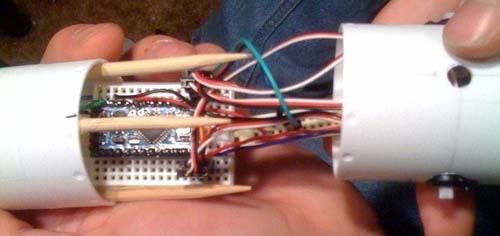
[Garote] has been extremely busy. Busy building an electrical system into his bicycle, and even busier writing a monumental post about it. He covers an impressive range of topics, starting with the goal of adding a generator, battery, charging system, lights, and accessories to the bike. From there he clicks off one thing at a time, researching and ordering a wheel with a Dynamo hub for the generator, assembling and testing the cells of his battery, choosing the controller board for the charging system, and designing the accessory circuits like the iPhone charger above. If he adds too much more to the two-wheeled rig he’s going to have to plan a big road trip with it.
[Thanks Xuxo]













